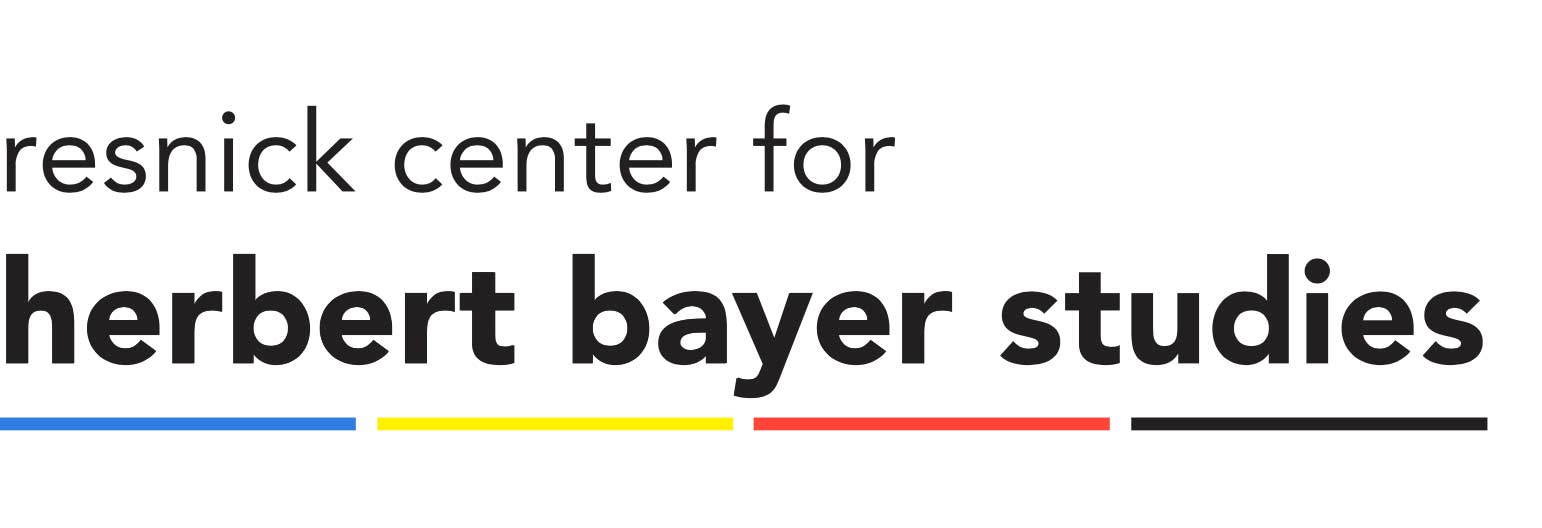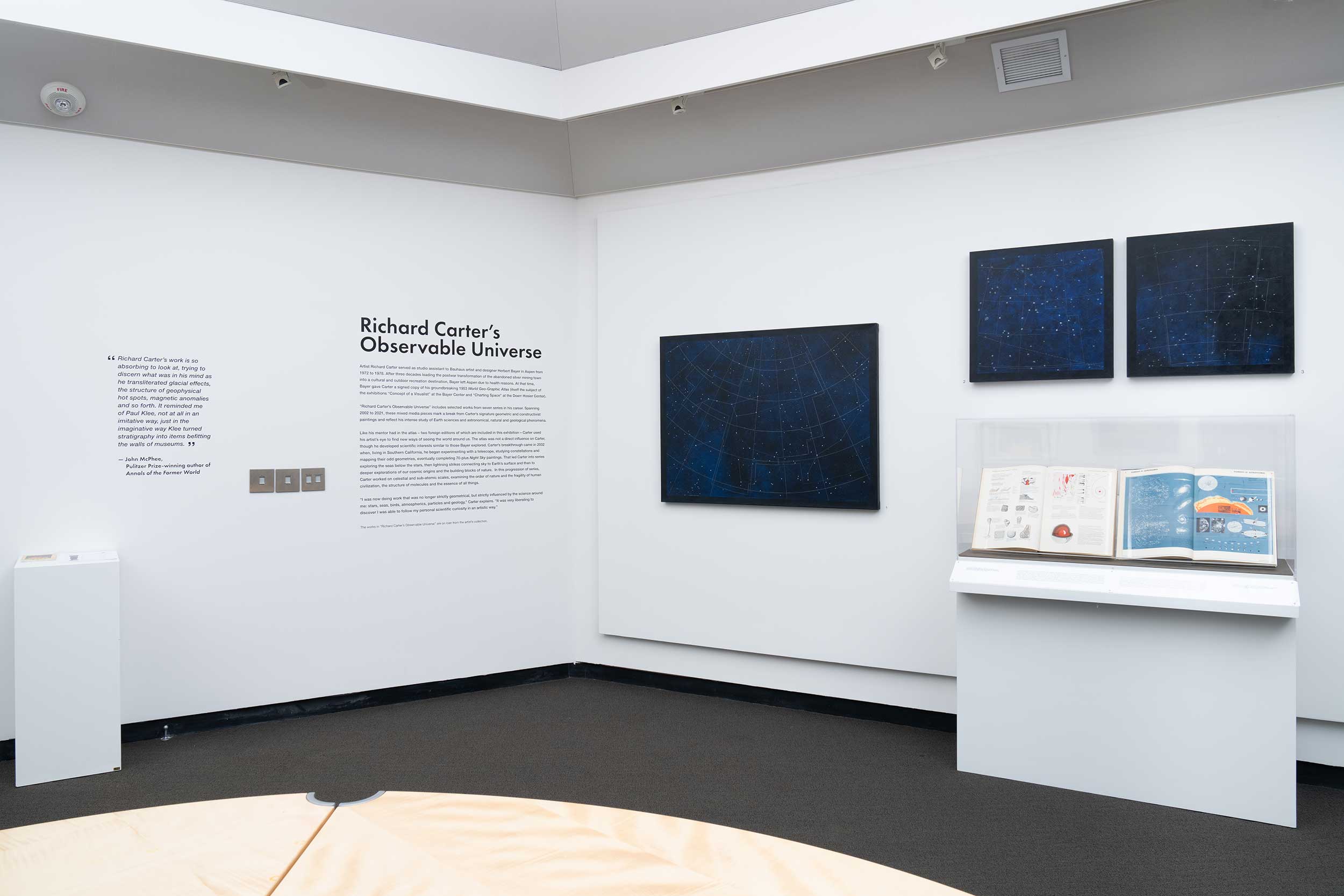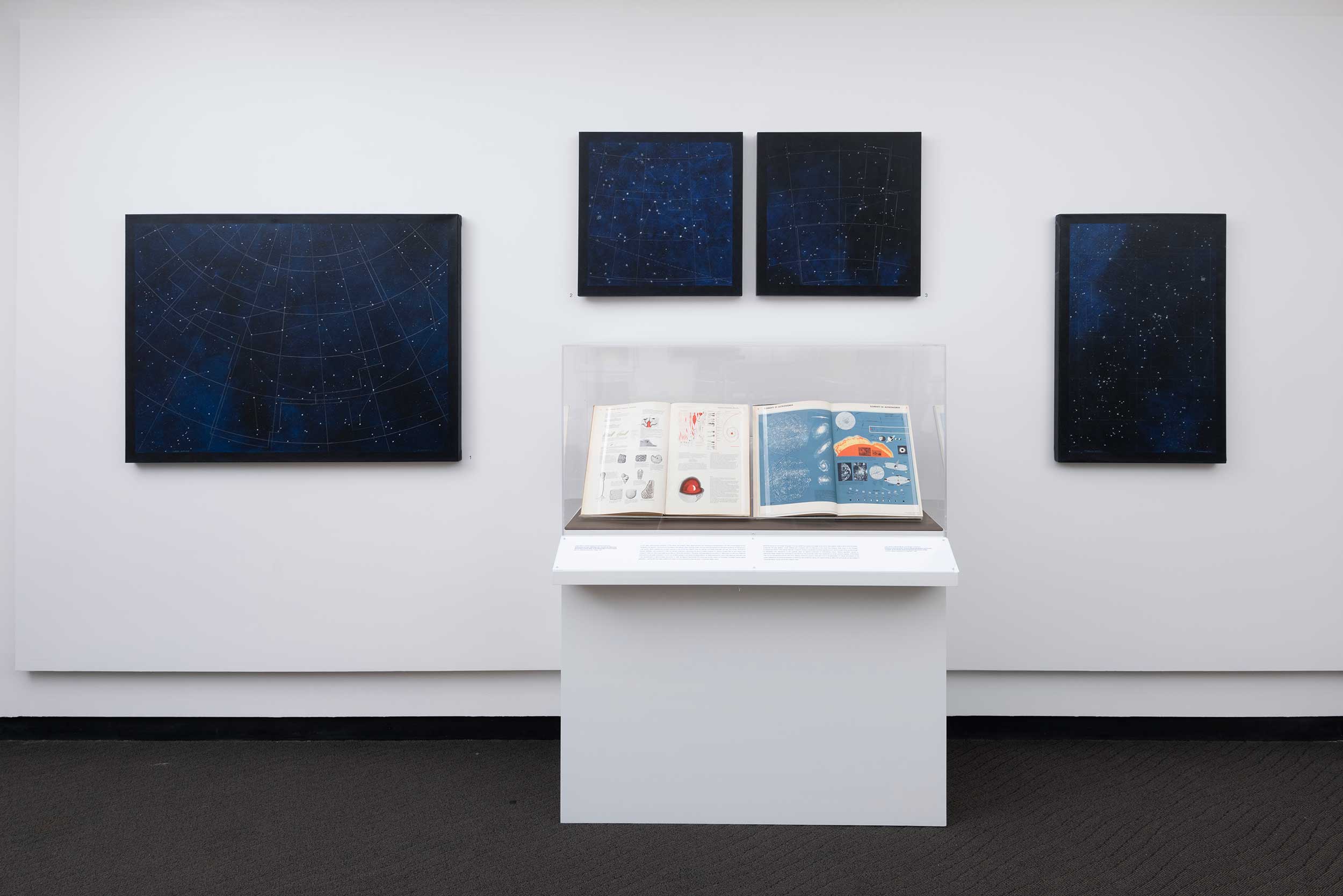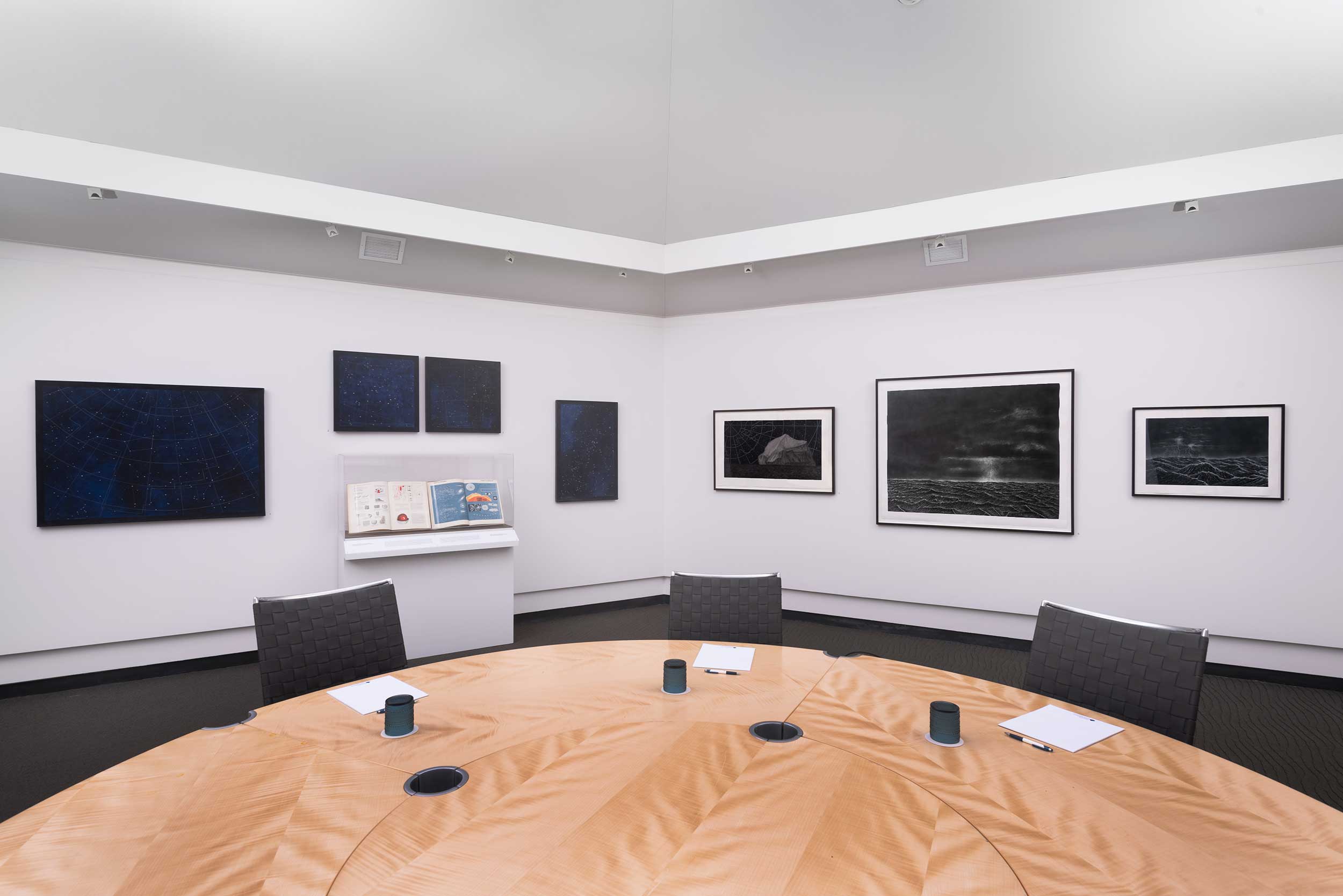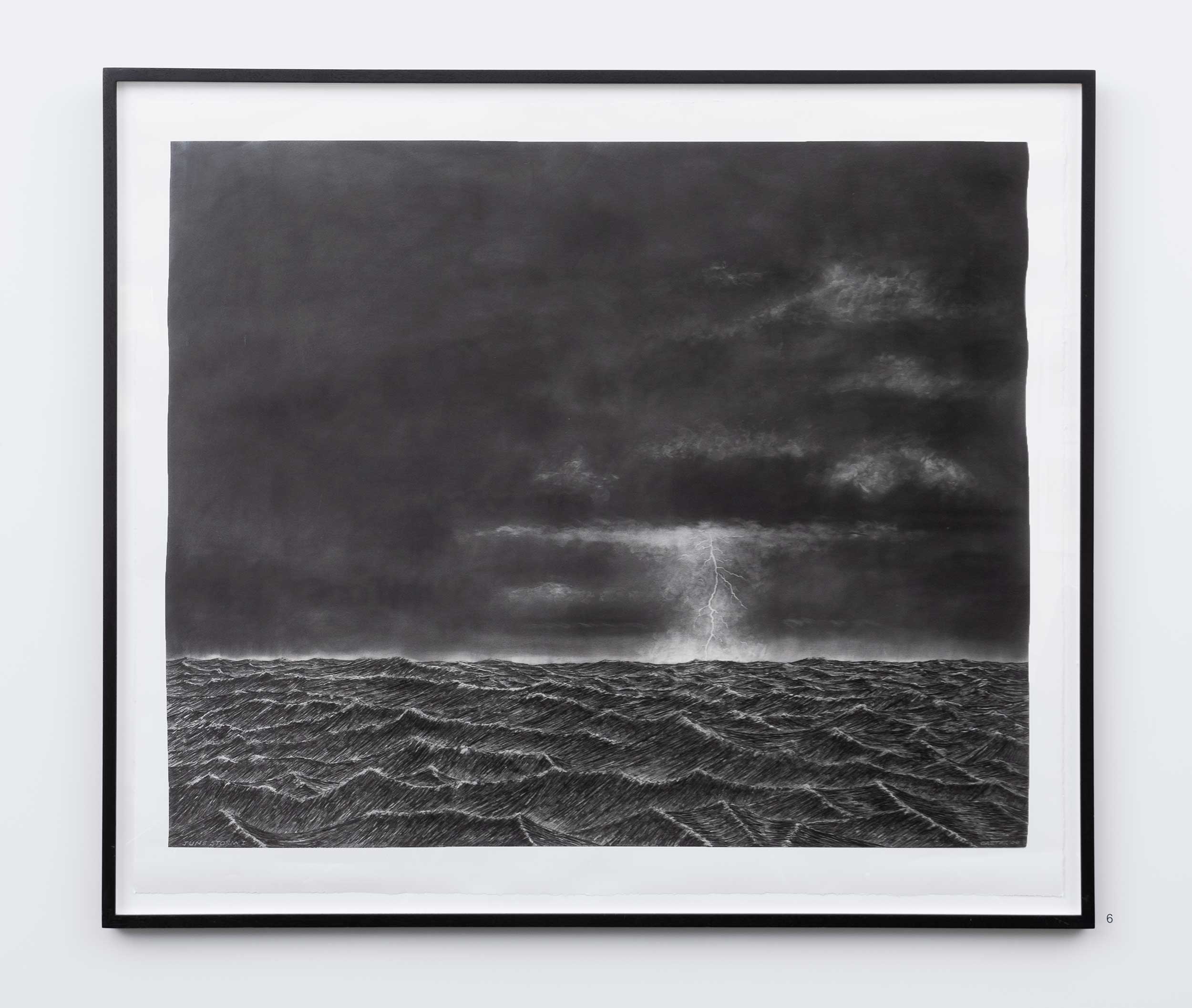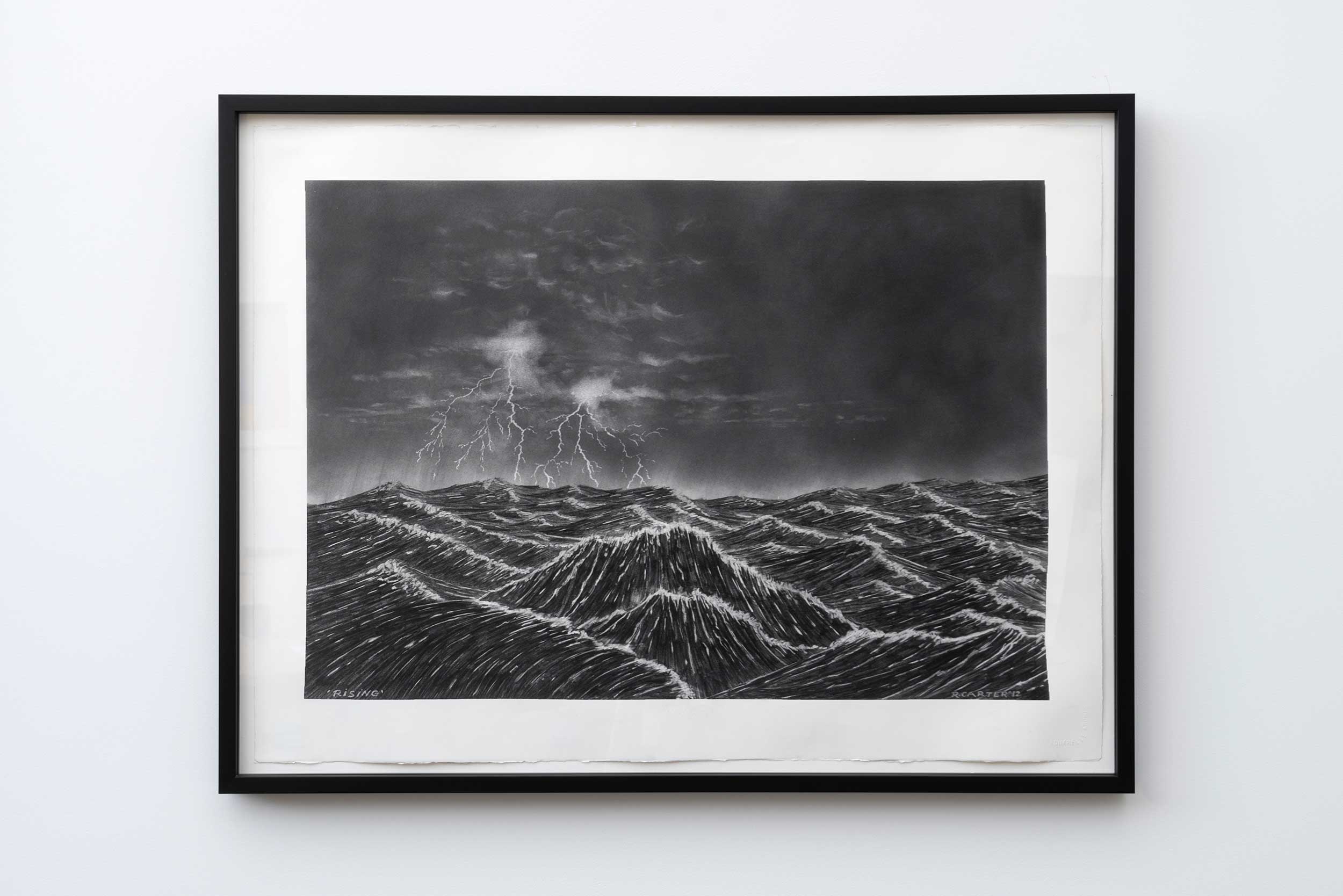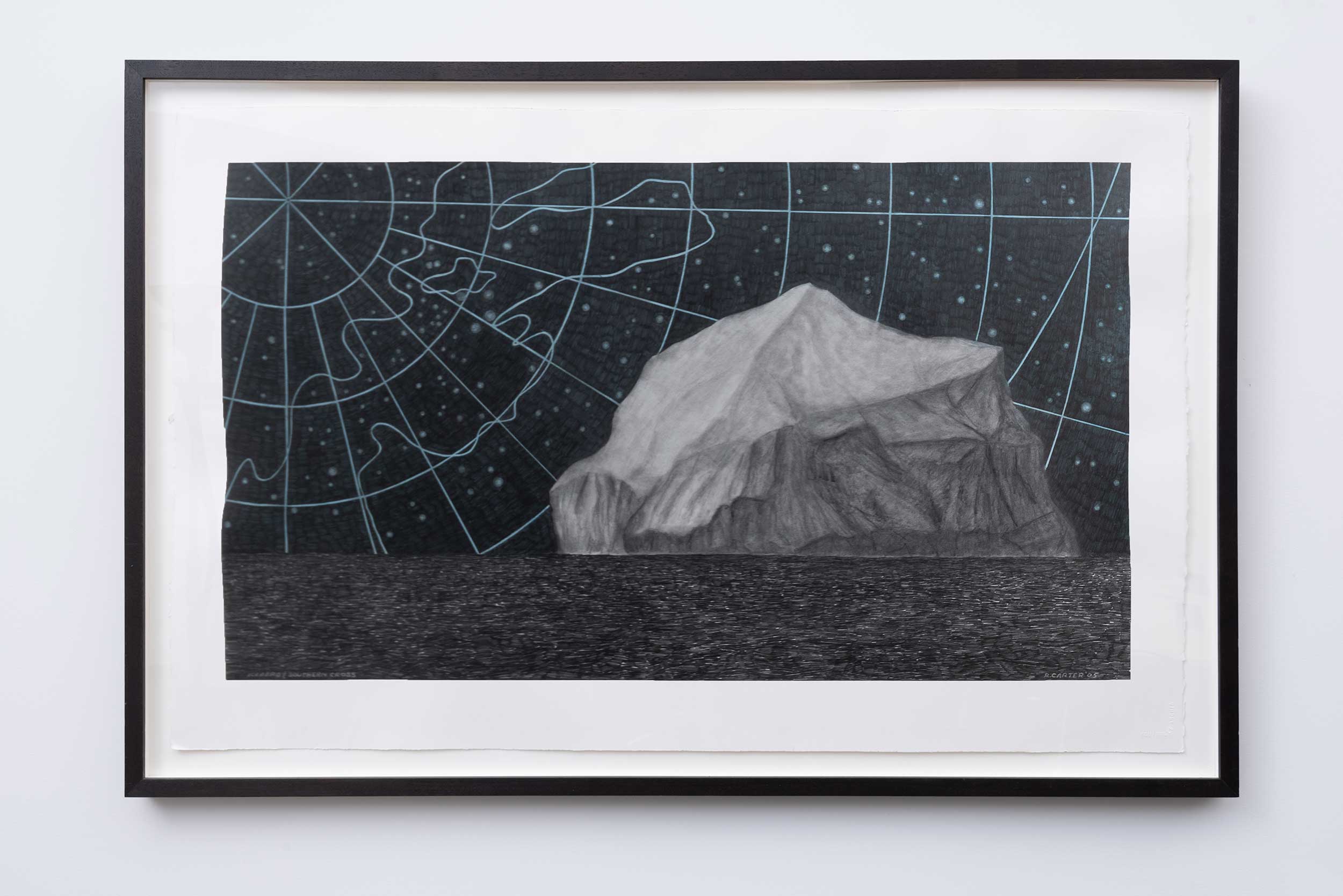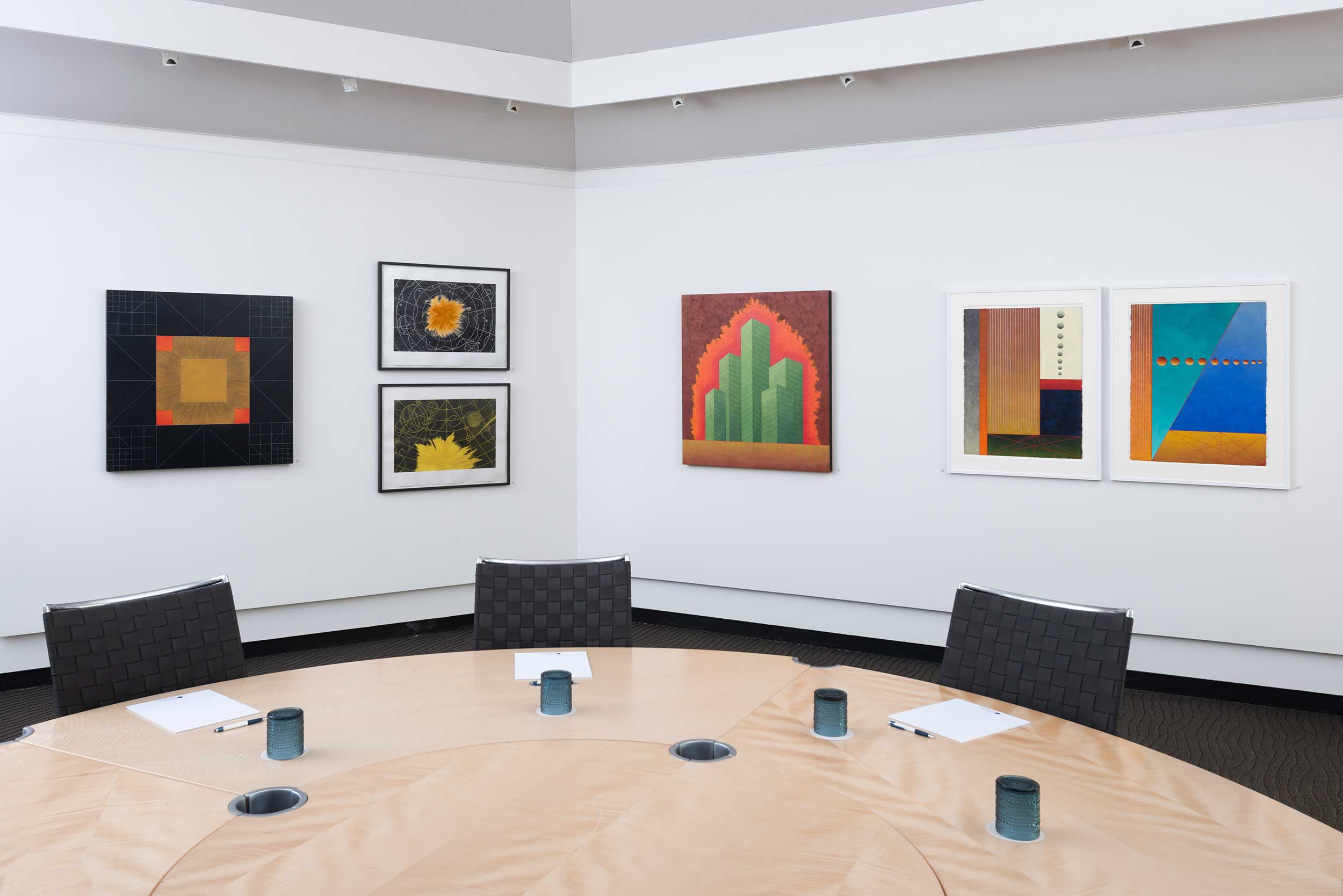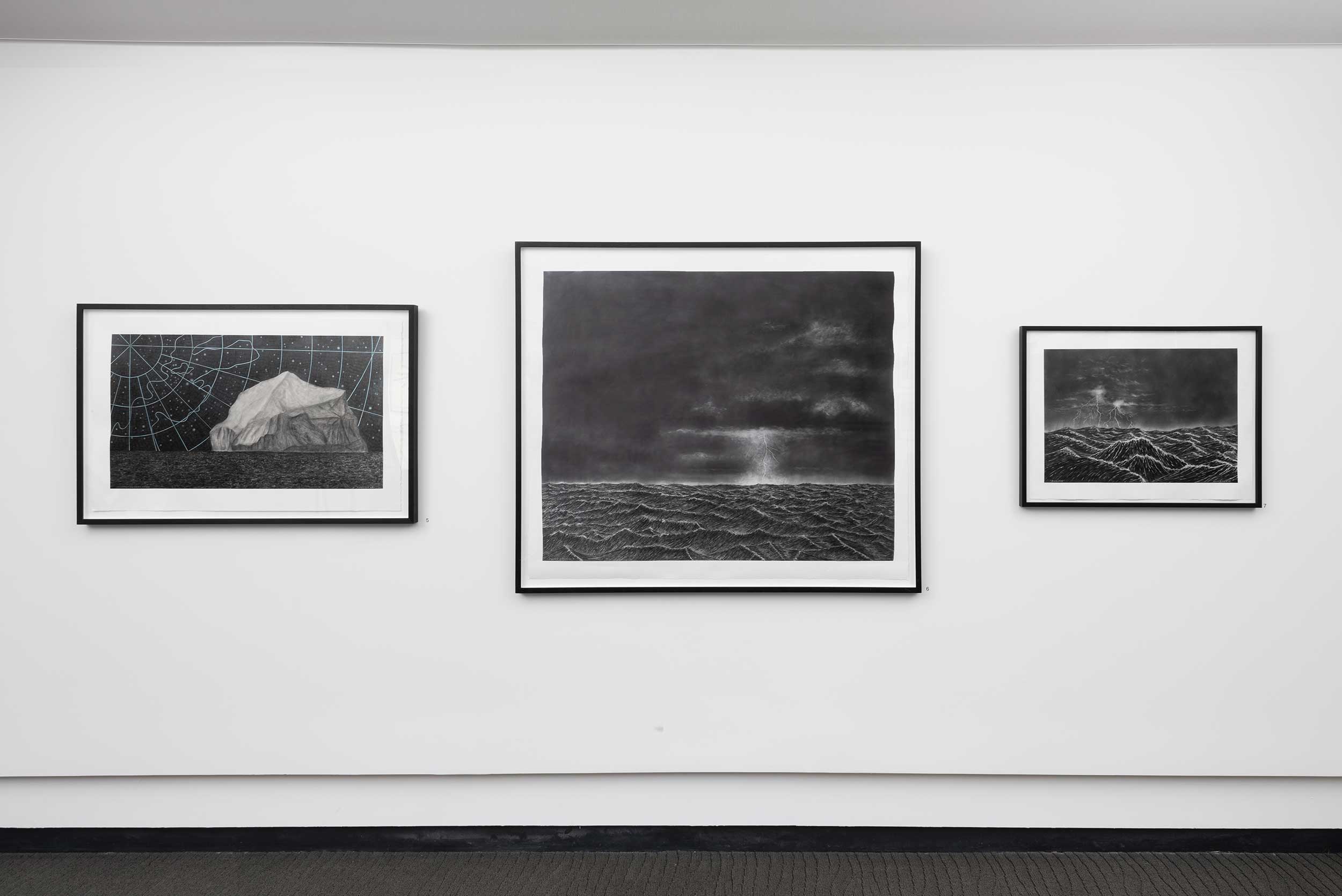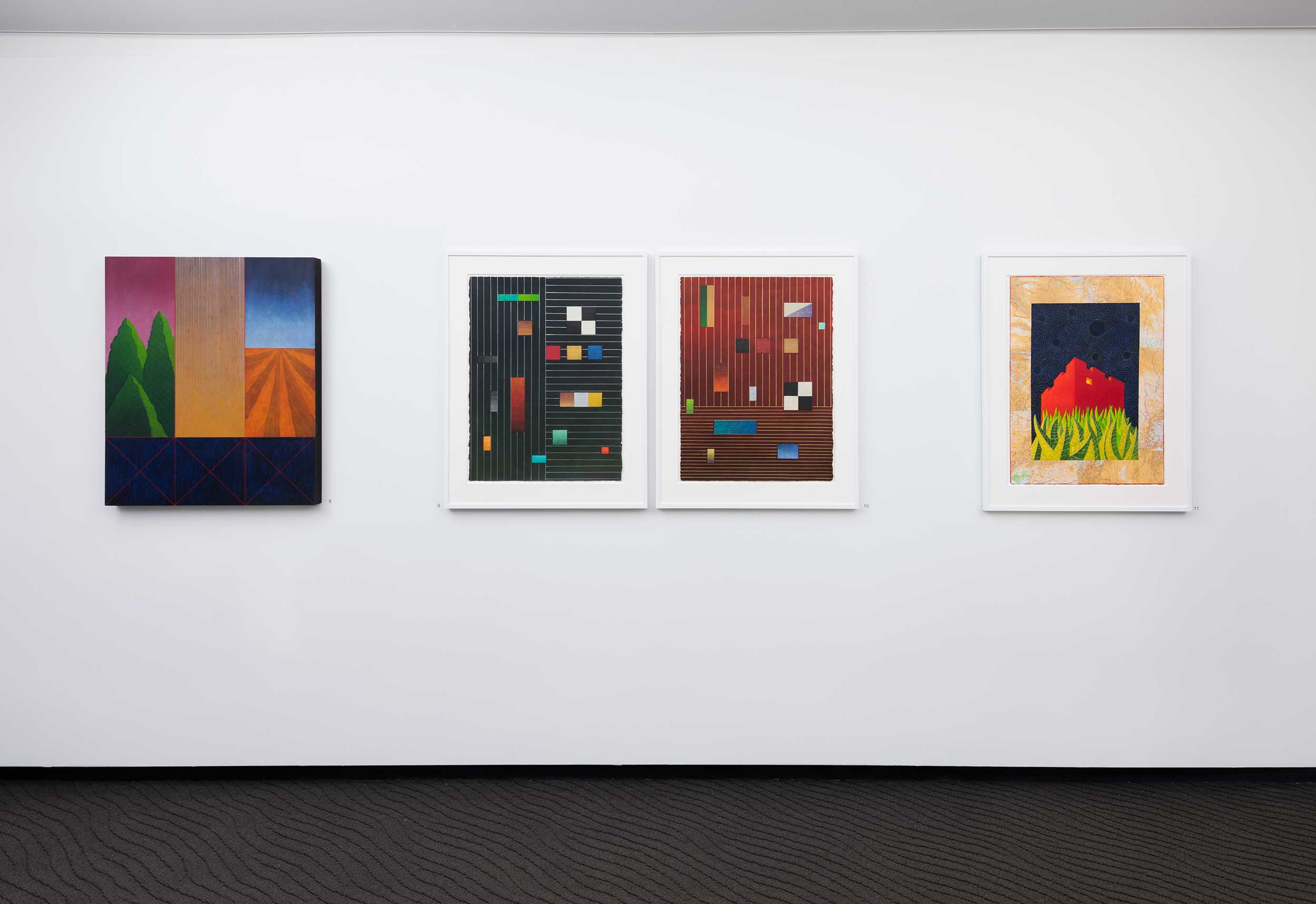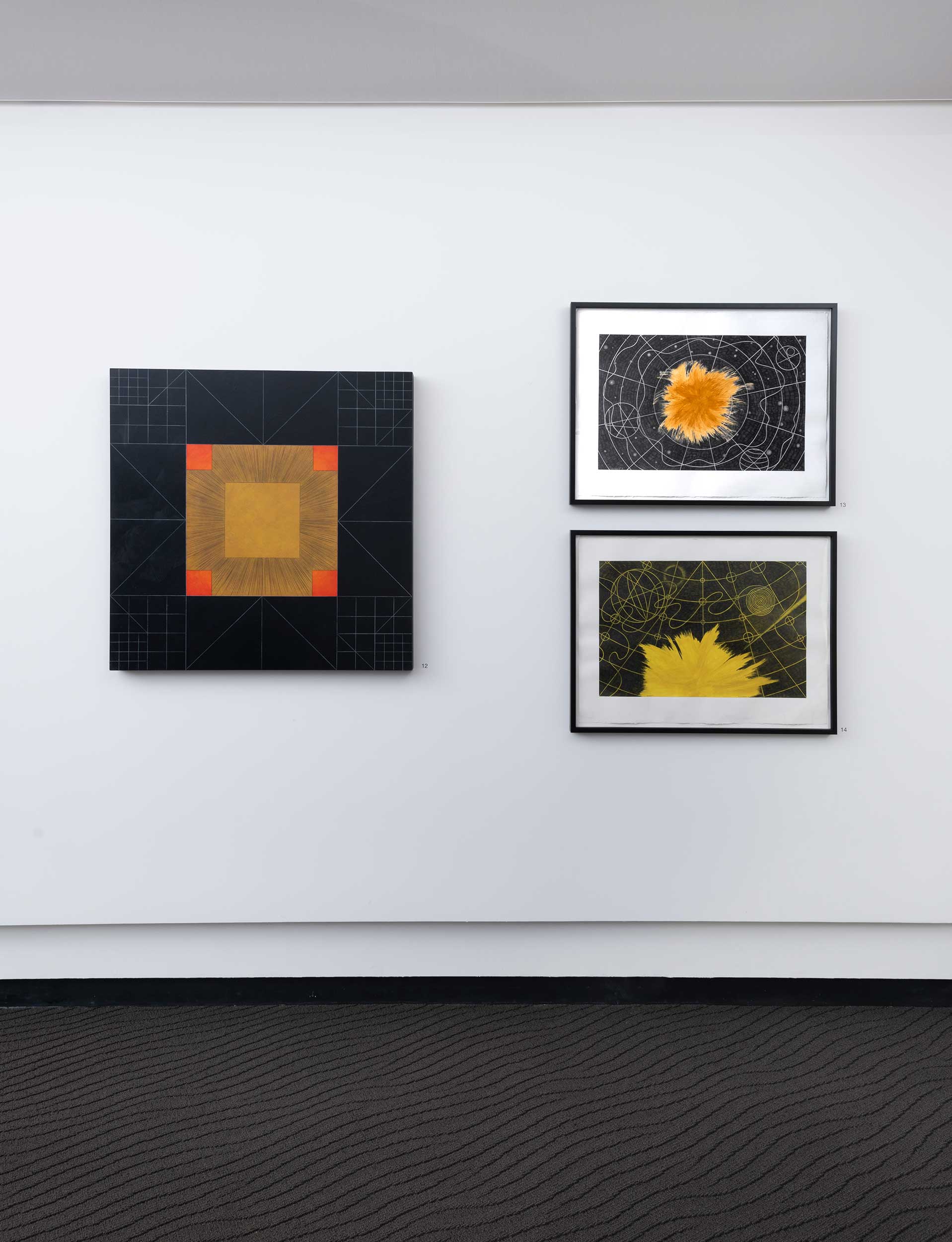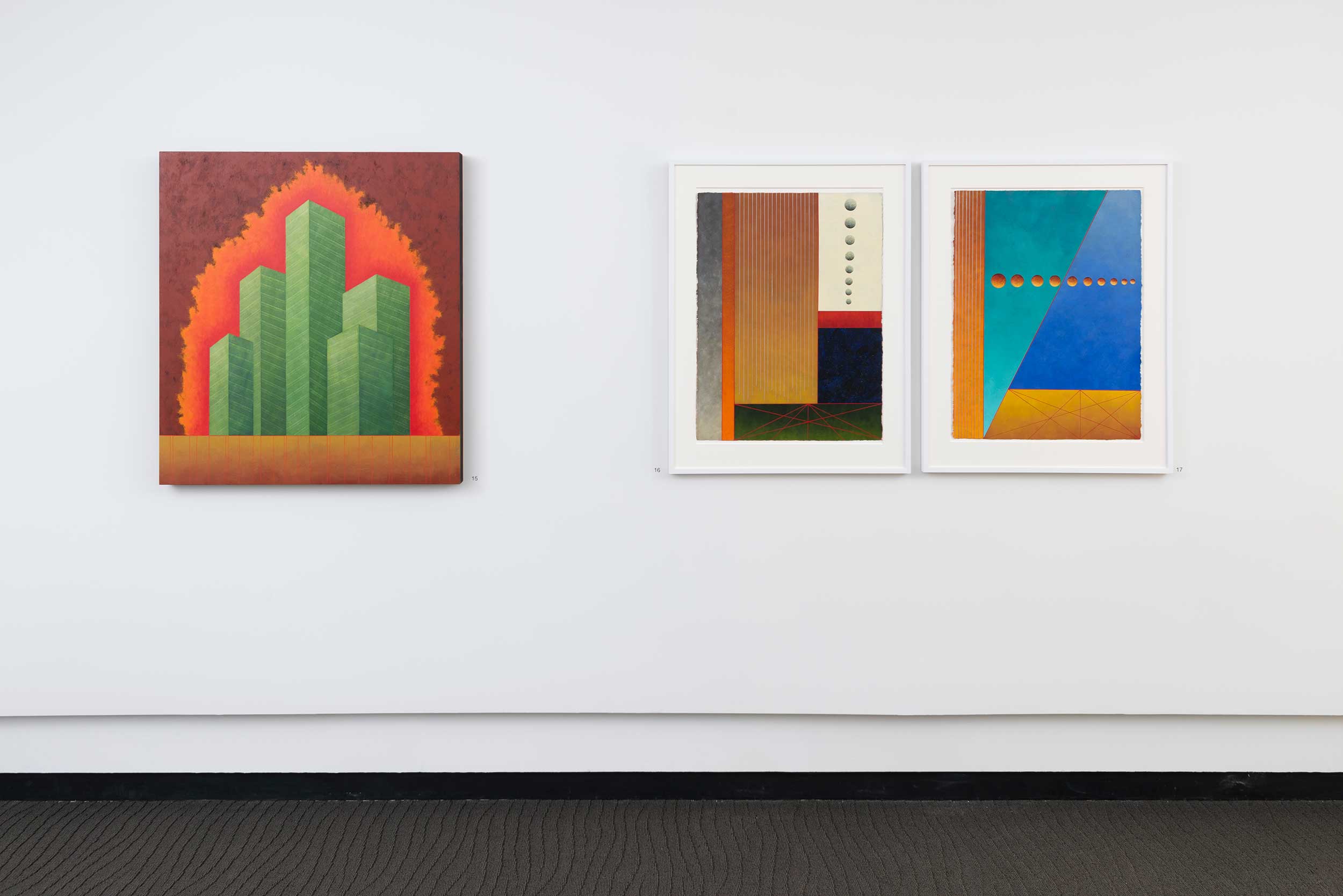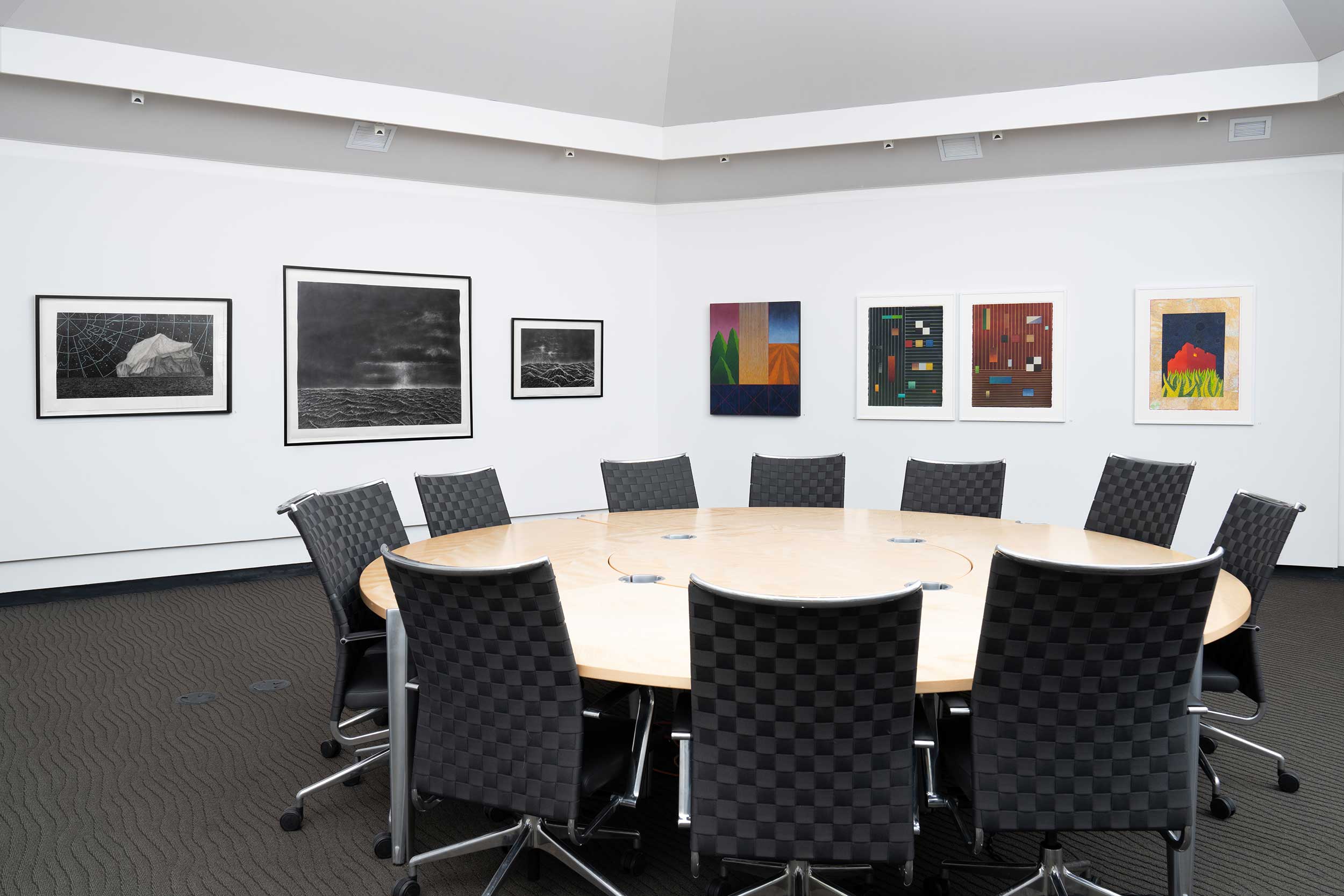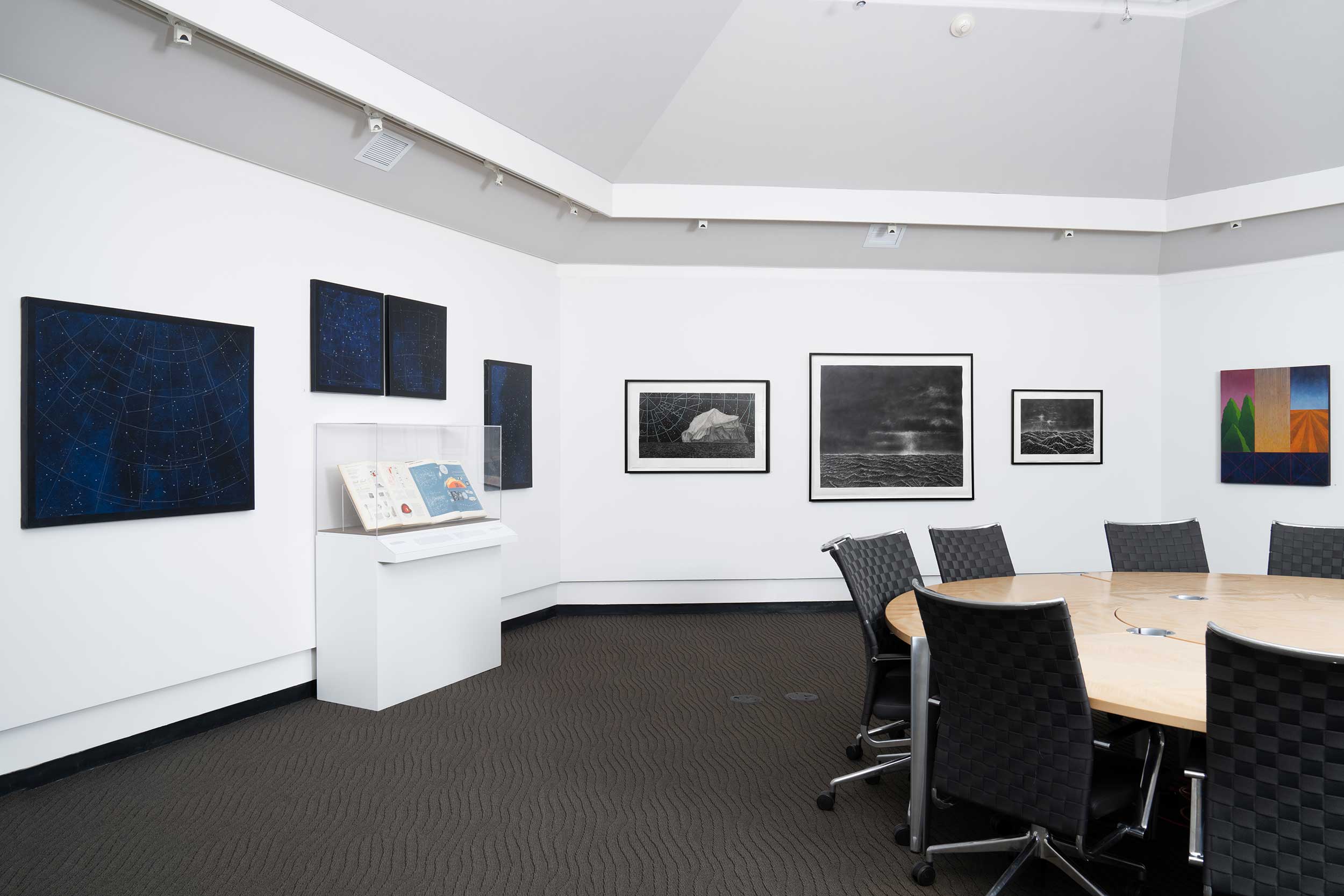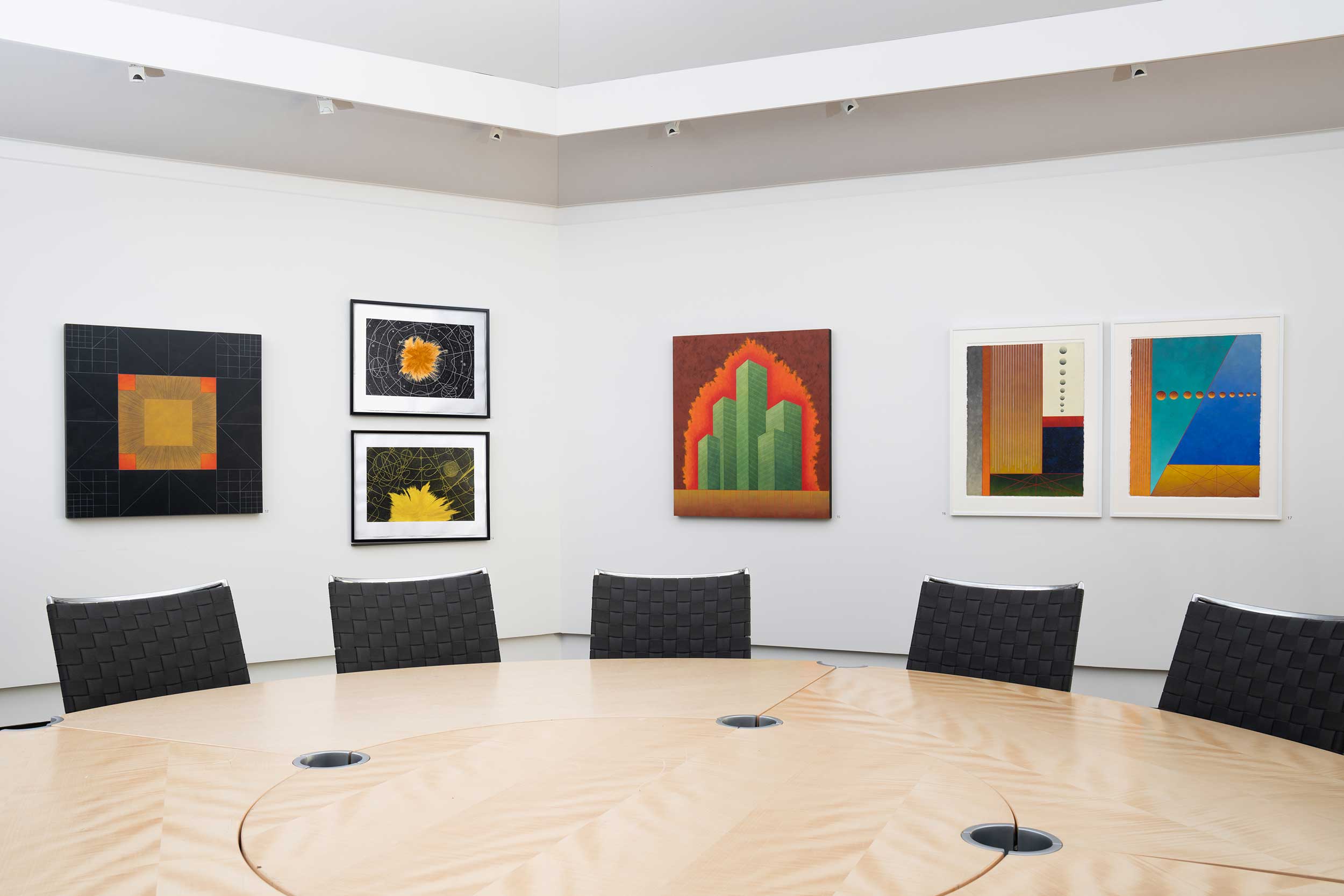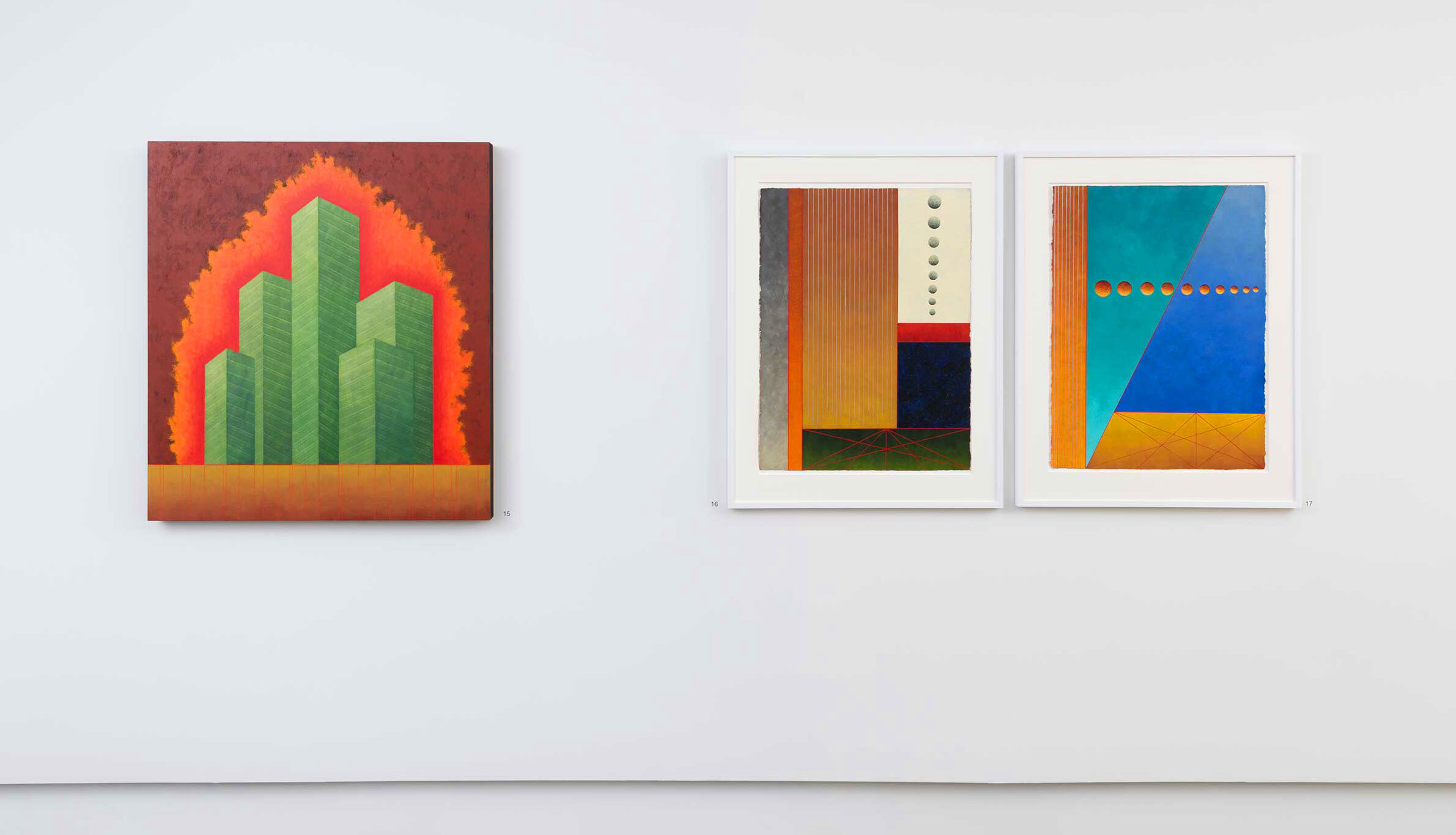
Richard Carter’s Observable Universe
Richard Carter’s Observable Universe, on view in the Paepcke Gallery through April 12, 2024, includes eighteen works from seven disparate series in the Basalt, Colorado-based artist’s career. Spanning 2002 to 2021, these mixed media pieces mark a break from Carter’s signature geometric and constructivist paintings and instead reflect his intense study of Earth sciences and astronomical, natural, and geological phenomena.
Richard Carter served as studio assistant to Bauhaus artist and designer Herbert Bayer in Aspen from 1972 to 1978. During that time, Bayer gave Carter a signed copy of his groundbreaking 1953 World Geo-Graphic Atlas. While the atlas was not a direct influence on Carter, he developed scientific interests similar to those that Bayer explored, using his artist’s eye to find new ways of seeing the world around us. Spanning 2002 to 2021, these mixed media pieces mark a break from Carter’s signature geometric and constructivist paintings and instead reflect his intense study of Earth sciences and astronomical, natural, and geological phenomena.
Like his mentor had in the atlas – two foreign editions of which are included in this exhibition – Carter used his artist’s eye to find new ways of seeing the world around us. The atlas was not a direct influence on Carter, though he developed scientific interests similar to those Bayer explored. Carter’s breakthrough came in 2002 when, living in Southern California, he began experimenting with a telescope, studying constellations and mapping their odd geometries, eventually completing 70-plus Night Sky paintings. That led Carter into series exploring the seas below the stars, then lightning strikes connecting sky to Earth’s surface and then to deeper explorations of our cosmic origins and the building blocks of nature. In this progression of series, Carter worked on celestial and sub-atomic scales, examining the order of nature and the fragility of human civilization, the structure of molecules and the essence of all things.
Carter explains the work in the current exhibition as “not strictly geometrical, but strictly influenced by the science around me: stars, seas, birds, atmospherics, particles and geology. It has been very liberating to discover that I can follow my personal scientific curiosity in an artistic way.”
“Richard Carter’s work is so absorbing to look at, trying to discern what was in his mind as he transliterated glacial effects, the structure of geophysical hot spots, magnetic anomalies and so forth. It reminded me of Paul Klee, not at all in an imitative way, just in the imaginative way Klee turned stratigraphy into items befitting the walls of museums.”
–John McPhee, Pulitzer Prize-winning author of Annals of the Former World
